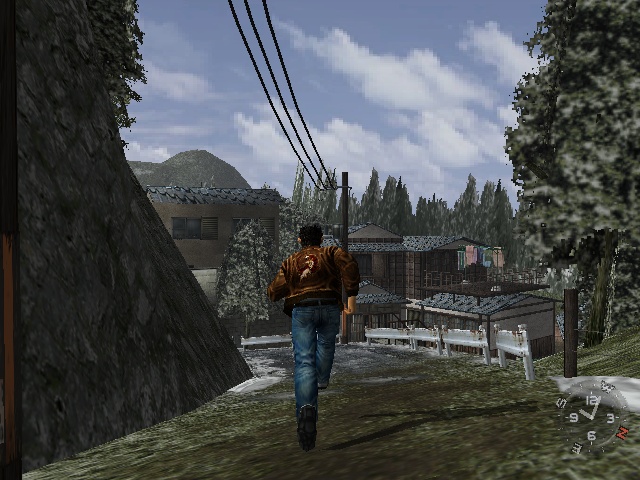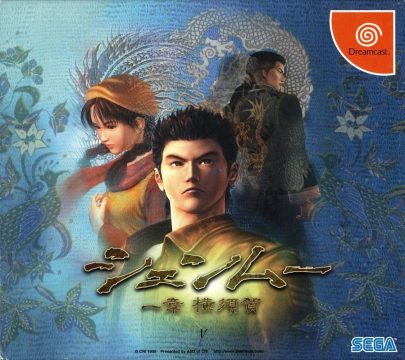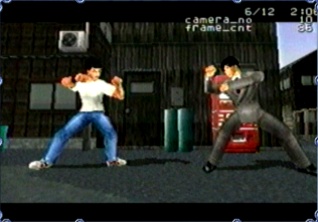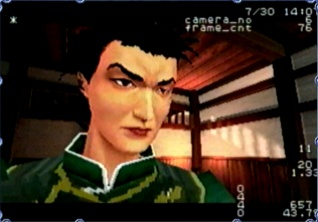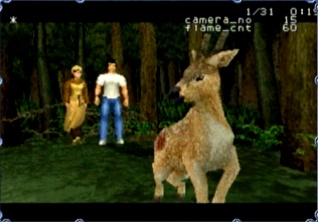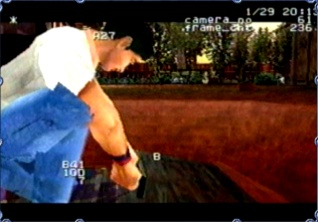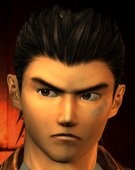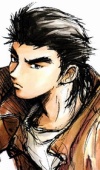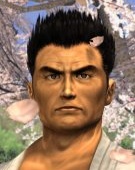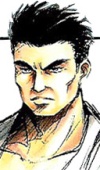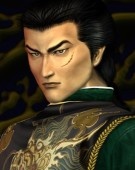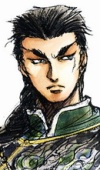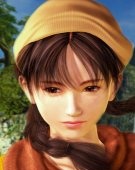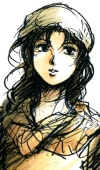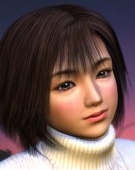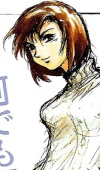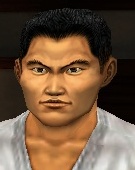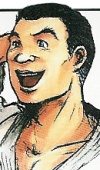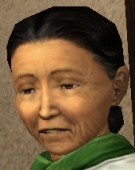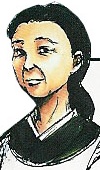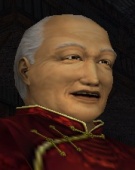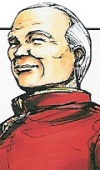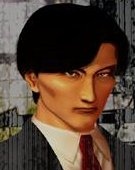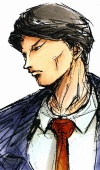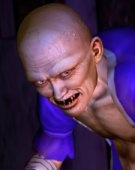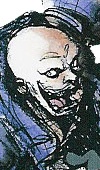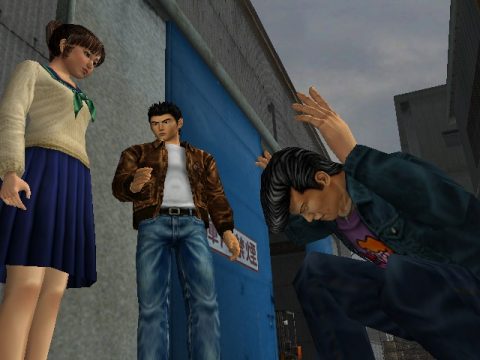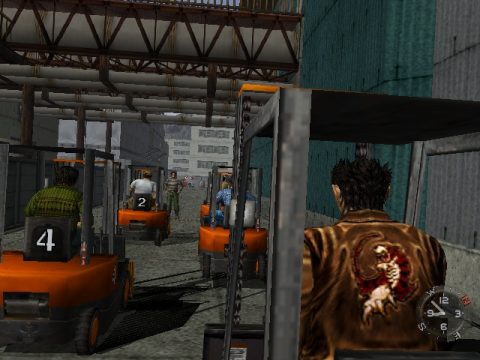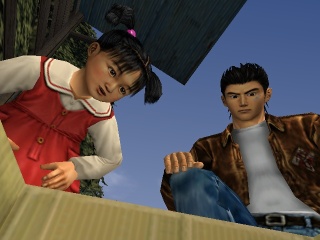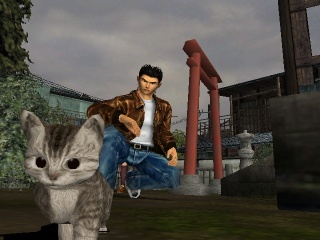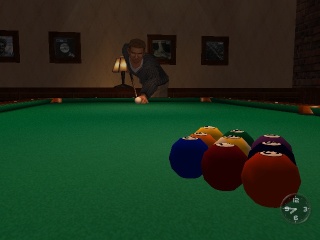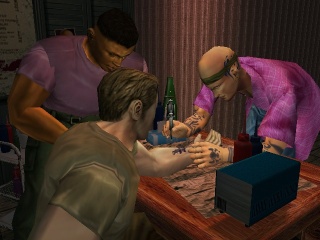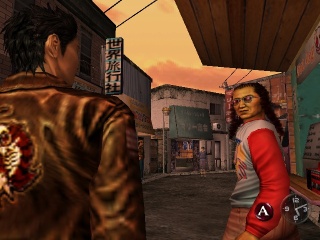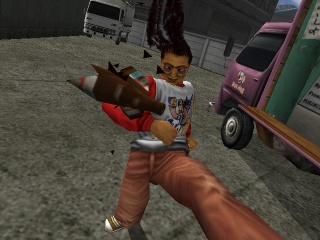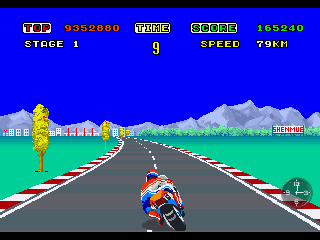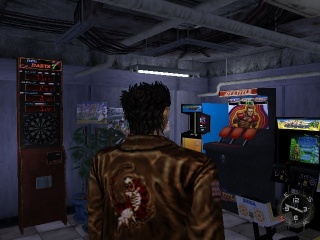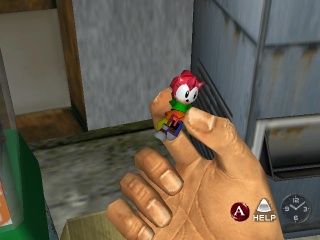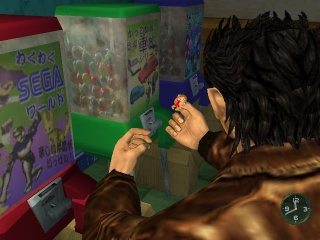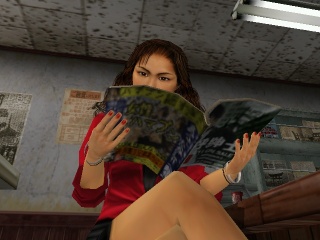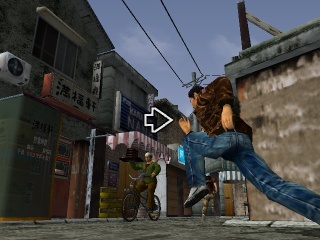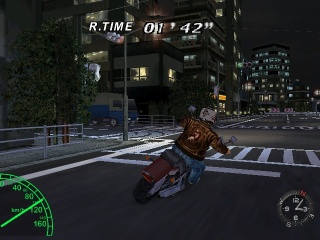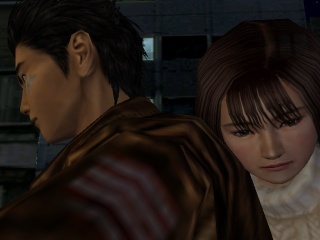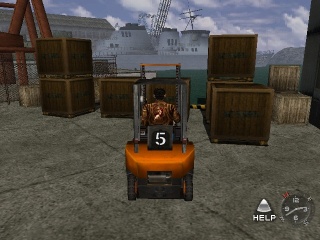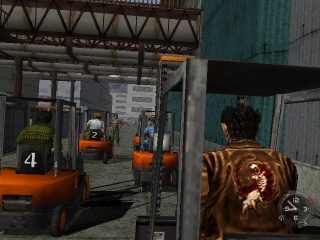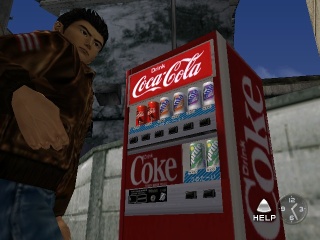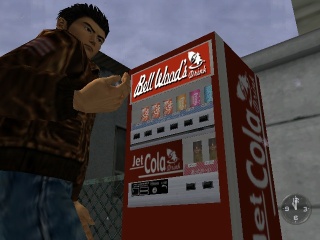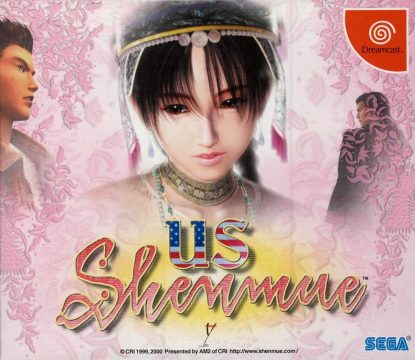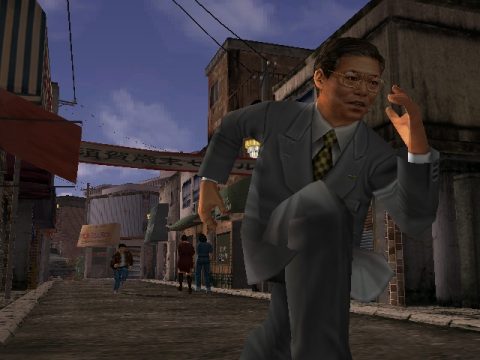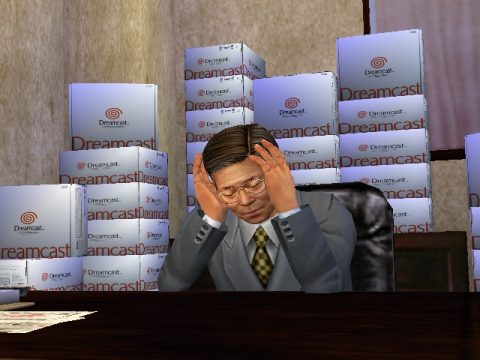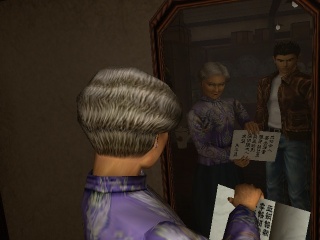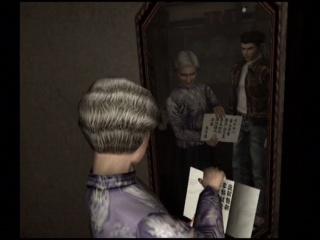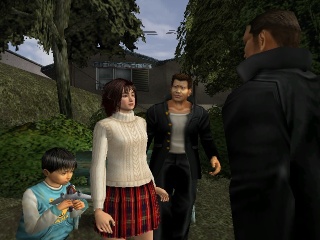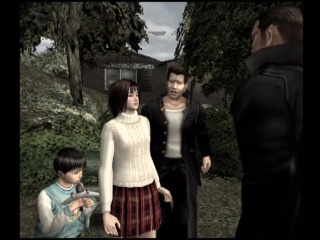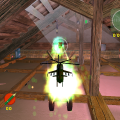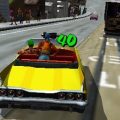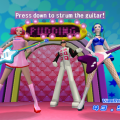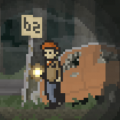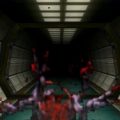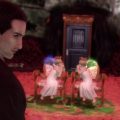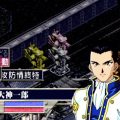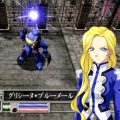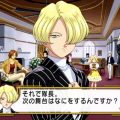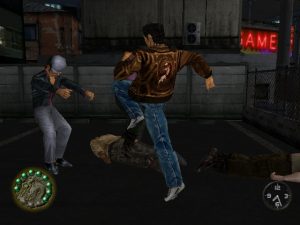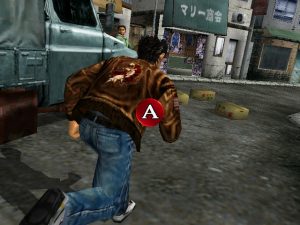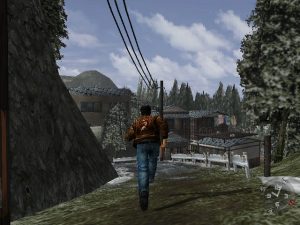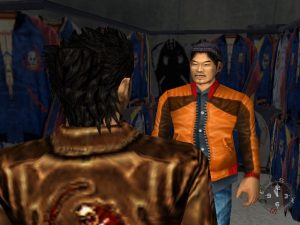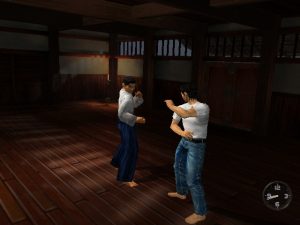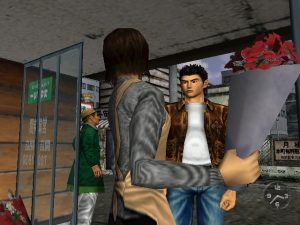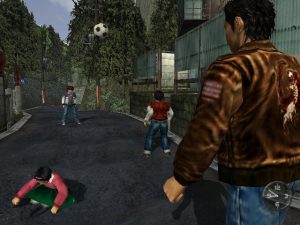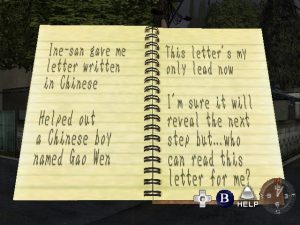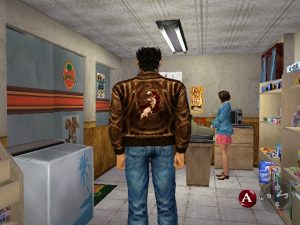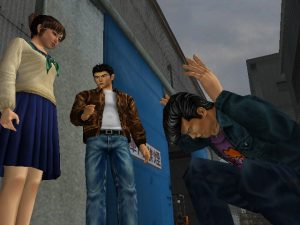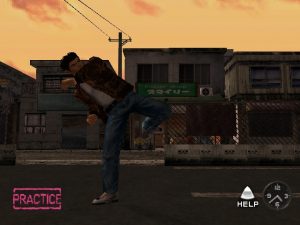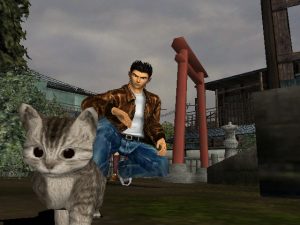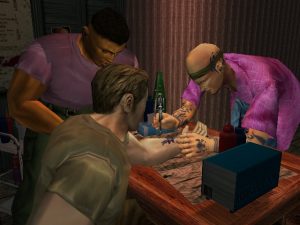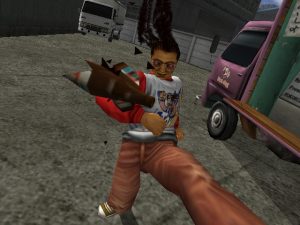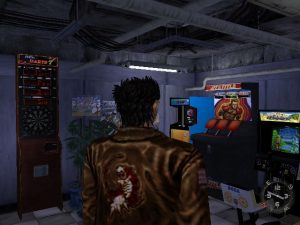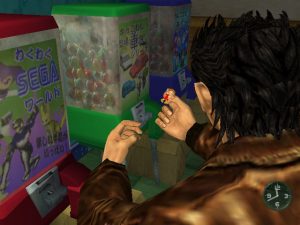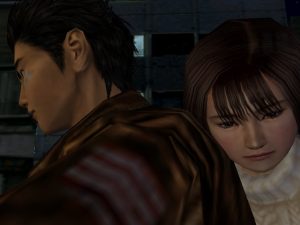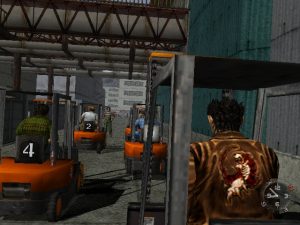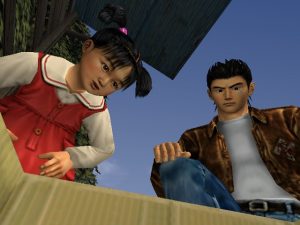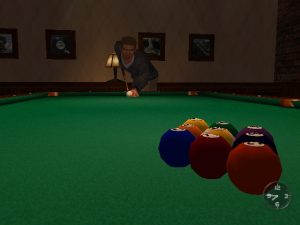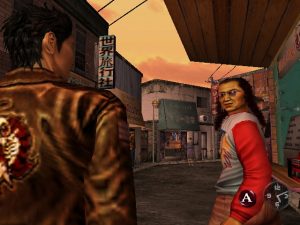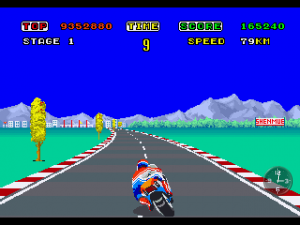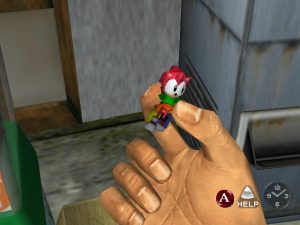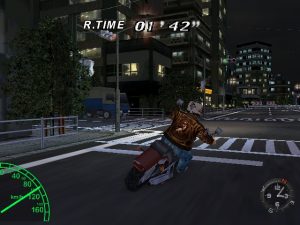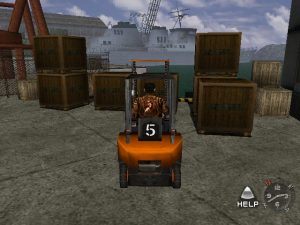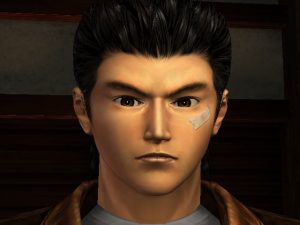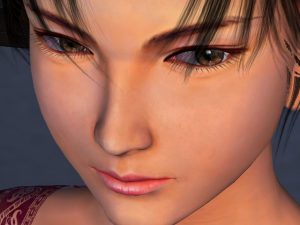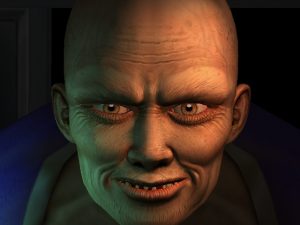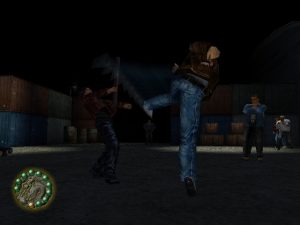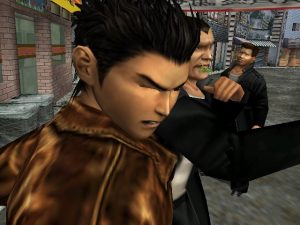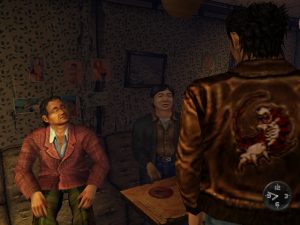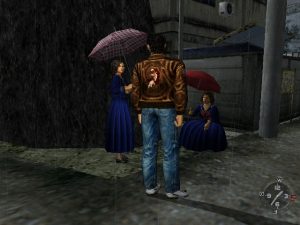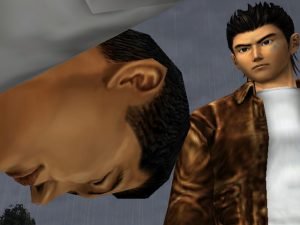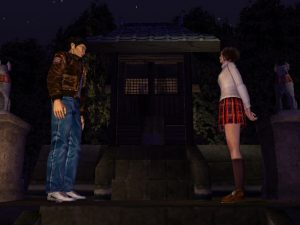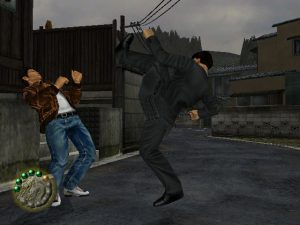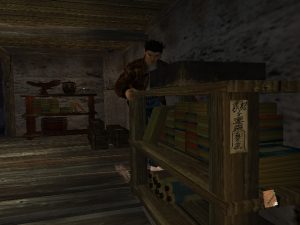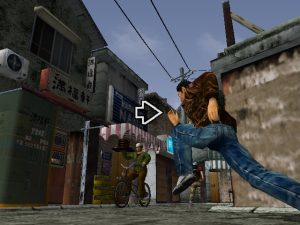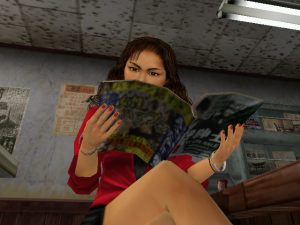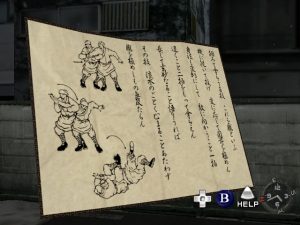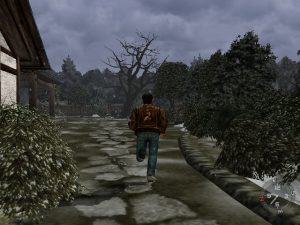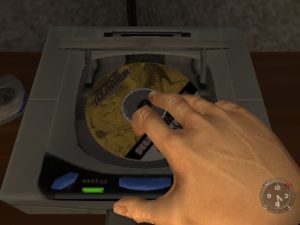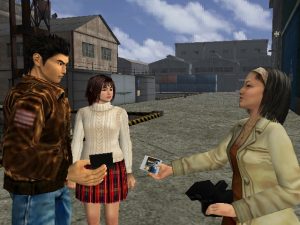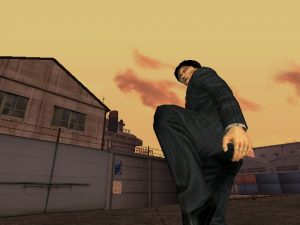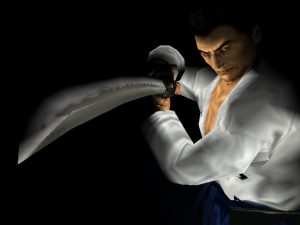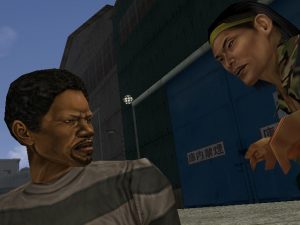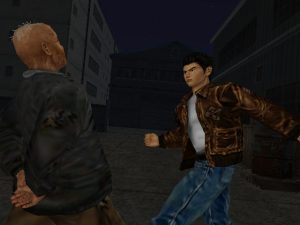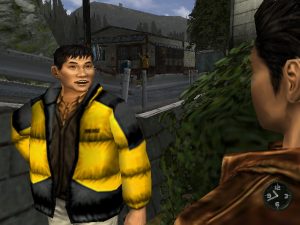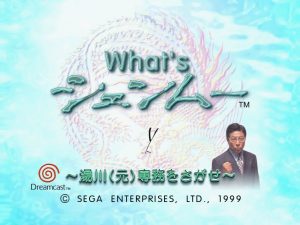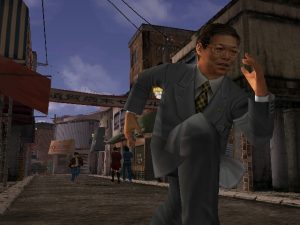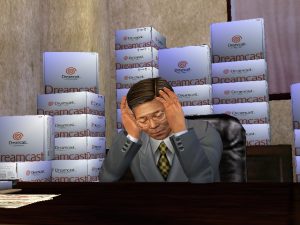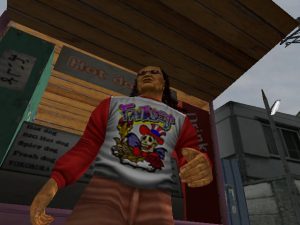by Kolbe, Kurt Kalata and Sam Derboo
Sega’s Shenmue was meant to be the killer-app of the Dreamcast. Sure, the console heralded Sonic’s move into 3D with Sonic Adventure and delivered superior fighting game action with Soul Calibur. But Shenmue was to be the game that should really convince people to move beyond their Playstations and Nintendo 64s. More than a mere video game, it was meant to create a virtual world that adhered closer to reality than anything that had come before, while presenting itself as an epic, interactive kung fu movie.
Unfortunately, some things just prove to be way too ambitious.
Shenmue – named after a tree found in the second game – is the brainchild of Yu Suzuki and his Sega AM2 team, which was previously known for arcade hits like Virtua Fighter and OutRun. It’s a great series with some fantastic ideas, but some of them work better in theory than they do in practice. If you were to put Shenmue into a genre, it would cross somewhere between PC-style adventure games and Japanese RPGs. But unlike adventure games, there are rarely any real puzzles to solve. And while there’s some fighting, it’s most definitely not at the forefront of action gaming either. In fact, most of what you do revolves around little more than fetch questing. Instead Shenmue focuses all around exploration and atmosphere, trying to replicate the intricacies of the real world and putting them in digital form. The first game featured an incredibly detailed, 3D recreation of the Japanese city of Yokosuka, and it’s about as close as you can get to exploring an actual Japanese suburb without ever actually visiting the country. You can talk to all the persons you meet on the street, each of whom has unique character models, voices, and agendas. (The strategy guide included full biographies for every single NPC, even the ones that never had anything useful to say.) You can get small jobs, and waste your cash by buying soda from vending machines, tossing 100 yen coins to buy capsule toys, and hang out at the arcade all day playing old Sega classics. Each day runs on a timer, beginning in the early hours of the morning. As it grows into evening, the sun sets, and when it turns dark, the streets go empty. The weather conditions change day by day, and there’s even an option that replicates the actual real life weather conditions of Yokosuka in 1986. The second game is likewise full of details like that, but instead it takes place in Hong Kong and part of China.
Sega went to great lengths to avoid Shenmue being labeled as an RPG and instead referred to it as “FREE” (Full Reactive Eyes Entertainment), because it was meant to give you total freedom on how you progressed, all while being as close to reality as possible. The major problem with Shenmue is that, of course, reality can sometimes be pretty boring. Most of the time you’re doing detective work, which isn’t nearly as interesting as you see it on TV. You run around and interrogate random people until you find someone who knows what they’re talking about, then follow their directions, and then repeat. It gets worse when, in order to make money, you have to get a job – which usually proves to be as excruciatingly tedious as it is in real life. For example, a good portion of the original Shenmue consists of moving around boxes with a forklift. Thankfully, there are some action based sequences that make the adventure a bit more exciting.
QTE stands for Quick Time Event, and is used to give the player some sense of interaction during cinema scenes. In fighting or chasing sequences, various buttons will flash onto the screen, and you need to react quickly to their commands. If you hit the correct button within the time limit (usually a second or two), you’ll succeed, but miss and you’ll fail. Fail too often and you’ll need to start the sequence from scratch. These sequences are directly borrowed from old Laserdisc games like Dragon’s Lair, but were first given their name here and have since been used in countless other games (to similar effect) like Capcom’s Resident Evil 4 and Sony’s God of War.
The fighting sequences are rare, but surprisingly well done, because Shenmue borrows its fighting engine from the Virtua Fighter. It simplifies it a bit, though, and ditches the defense button in place of dodge and throw moves. Unlike Virtua Fighter, you’ll usually fight more than one enemy at once, resulting in some impressive 3D brawls. A number of move scrolls for more complex maneuvers can be discovered throughout the games. You are occasionally asked to pull off some kind of tasks in order to properly learn these moves, like grabbing leaves with your fingers or punching a sakura tree over and over until its blossoms litter the ground.
Before Shenmue: Virtua Fighter RPG and Project Berkeley
Naturally, all this astounding level of detail took huge amounts of time and money. Shenmue‘s early conception goes back to 1994, when Yu Suzuki traveled to China to do research for his next Virtua Fighter game. At that time it was going to be a spin-off of the series, and was even dubbed Virtua Fighter RPG for a period of time, as the game would have Akira Yuki from Virtua Fighter as the main character. Eventually, this gave way to Project Berkeley, ditching Akira and replacing him with a similary looking character, the young martial artist Ryo Hazuki. The platform of choice was the Sega Saturn, and the video footage Sega released on the Shenmue II disc suggests that much work had been put into this version. The video showed many scenes that later wound up in Shenmue II, and one can only imagine what Sega didn’t reveal. At any rate, the Saturn was nearing its demise while the game was still in development, and it turned out Shenmue needed much more power for Yu Suzuki to achieve his dreams. Hence the game was ported to the Dreamcast and became what we all know as the 70+ million dollar game, Shenmue (although Yu Suzuki claimed later that development and marketing costs were “only” $47 million).
Originally there were to be a total of sixteen chapters in the Shenmue saga. The first game would encompass the entire first chapter, but sales were somewhat underwhelming, forcing Suzuki to scale back the project and combine some of the chapters into a single game. The second chapter – meant to take place on the boat from Japan to Hong Kong – was skipped entirely, and Shenmue II encompasses the third, fourth and fifth chapters. Unfortunately, the sequel didn’t sell up to expectations either, and the entire series was halted.
Why wasn’t it successful? For starters, many gamers were turned off by the glacial and deliberate pace. As mentioned above, there’s a fantastic world to explore, but it very quickly runs out of interesting things to do. Another huge turn-off were the controls. Ryo moves around clumsily like a robot. And whose brilliant idea was to control him with the digital pad only? The analog stick would’ve been the ideal choice, but it just makes the protagonist look around. The L trigger makes him run, even without using the pad, which only makes it more awkward. Sure, it isn’t unplayable, but one have to master the art of walking around to avoid falling in Ryo’s most dangerous enemy: a corner. Moving a character, being one of the most basic things in almost every game, shouldn’t be that difficult.
Furthermore, Shenmue came out in America in the holiday season of 2000, right when the PlayStation 2 was unveiled and the Dreamcast was swiftly losing ground to Sony’s behemoth. Just a year later, in 2001, came Grand Theft Auto 3. Rockstar’s gmae also replicated a real life city in digital format, but it was much broader in scope and lacked many of the careful details of Shenmue. Still, this didn’t seem to bother the millions who bought it – not only was it much more user friendly, but it allowed gamers to go on crazy violent killing rampages, whereas Shenmue just offered lots of walking around and talking to people.
Saturn Screenshots
Please be warned that there are many spoilers in these reviews, but those bits are part of what makes Shenmue such a memorable game series. Just proceed with caution.
The first chapter of Shenmue begins on November 29th, 1986, with Ryo witnessing his father’s death at the hand of a man in a Chinese outfit. This man, ruthless and cold-blooded, seeks the Dragon Mirror, a mysterious relic possessed by the Hazuki patriarch. The mirror is stolen, and Iwao is left to die.
The next day, Ryo gathers his bearings and starts to investigate the city of Yokosuka, looking for clues that can lead him to his father’s executioner. Eventually he learns that the man is named Lan Di, a member of the Chinese mafia, and he may be associated with a group of local hoodlums called The Mad Angels. Then, after some days of useless research, Ryo receives a letter that was meant for his father. This is where the plot actually kicks off, as Ryo finds a man named Master Chen who knows all about Lan Di, and the Phoenix and Dragon twin mirrors. Ryo must travel to Hong Kong to hunt for Lan Di, but unfortunately plane tickets are way out of his grasp, so eventually he gets a job at the harbor and snags a trip on a boat.
Characters
Ryo Hazuki
The main character. His life took a wild turn when his father was murdered in front of him by Lan Di. It becomes Ryo’s sole purpose in life to find Lan Di and avenge his father, and he will do anything to achieve his goal. He’s a bit naive and single-minded, but he can effortlessly kick quite a bit of ass.
Iwao Hazuki
Ryo’s father and a master of Jiu Jitsu. With both mirrors in his possesion, he managed to kept the Phoenix one hidden from Lan Di. He has a past in China unknown to Ryo and apparently he killed someone called Zhao Sun Ming a long time ago. He looks like Segata Sanshiro…sort of.
Lan Di
A vicious chinese mafia boss (one of the four high ranking members of the Chi You Men organization) who searches for the Phoenix and Dragon mirrors with a mysterious goal in mind. His past is somehow connected with Ryo’s father, Iwao Hazuki.
Ling Shenhua
A girl who lives in Bailu Village in China. Ryo dreams about her a lot before he actually meets her in the last chapter of the second game. She’s supposed to have an important role in Ryo’s life and the story (so much that she’s in all posters, trailers and promotional material), but as no other games have been released, we will probably never know more about her.
Nozomi Harasaki
The (forced) love interest to Ryo in the first chapter. She’s gentle and polite, and thinks constantly of Ryo’s well being, to the point of being a bit of a nag. She helps running her grandmother’s flower shop, and often travels with her to Canada.
Masayuki Fukuhara
A long-time martial arts student of Iwao Hazuki, living at the Hazuki family residence. He’s like a brother to Ryo, who affectionately calls him “Fuku-san”. Fuku tries to help Ryo out in his quest as much as he can. He’s a little bit ditzy, though.
Ine Hayada
The elderly housekeeper of the Hazukis is constantly worrying about Ryo since his father’s death, reprimanding him when he does as much as showing up at home mildly late, and fiercly objects to his plans to go to Hong Kong. She also leaves him a daily allowance by the front door, Ryo’s only source of income until he gets a job.
Master Chen (Chen Yuewen)
A wealthy Chinese businessman who lives at the Yokosuka Harbor. Despite his calm and quiet demeanor, he’s quite strong and intelligent. By indirect petition of his friend Zhu Yuanda, he helps Ryo to gather some information about the mirrors, Lan Di, and the Chi You Men, and arranges Ryo’s travel to Hong Kong.
Chen Guizhang
The son of Master Chen, he protects his father’s interest with passion, as he’s his successor in the company. Although he’s reserved towards Ryo in the beginning and the two have a kind of rivalry going on, he still supports him in the end, mostly by helping him kick the tar out of the Mad Angels.
The biggest problem with Shenmue is that not much actually happens – Ryo discovers his father’s murderer is headed for Hong Kong, and then leaves to pursue. Then the credits roll. Sure, there’s a lot to see and do, especially since the world seems so alive. But when you get down to it, there’s only two real locations – Dobuita Street with the surrounding (small) neighborhoods, and the harbor, that’s it. You don’t uncover too much actual information either, which makes the whole ordeal rather anti-climatic. There are a handful of notable action scenes, including a stealth sequence where you sneak into a warehouse (which is a bit frustrating), a huge two-against-many rumble against the Mad Angels, and a motorcycle riding sequence as Ryo sets off to rescue Nozomi. Which, in turn, is one of the most frustrating things about the series – Ryo’s relationship with Nozomi is supposed to be pretty important, but it’s totally dropped by the second game, and it really has no consequences. There’s also almost no real way to lose – the only way to get a Game Over is if you dawdle too long. You have several months in game time to complete Shenmue, at which point Lan Di just comes back and kills you, requiring you to start the whole thing over. You really have to screw up badly to get to this point, but it’s still weird. In the end, aside from the actual gaming experience, there’s little to tell about Shenmue‘s story that’s worth telling.
With the non-substantial story comes an awful cutscene direction, with the camera panning constantly in all directions, a common sin of the rookie CG director who tries to show all the details in frame. This wouldn’t be so bad if the motion capture and animation weren’t so cartoonish, as practically every move is exaggerated. Most of this was excusable in 1999, back when game developers were first getting a hang of computer generated cinematics (keep in mind this was two years before other groundbreaking titles like Final Fantasy X and Metal Gear Solid 2), but they’ve aged somewhat poorly. Still, the detail in the main characters is pretty incredible, even if the secondary characters look like substantially less effort went into their design.
Unfortunately, the English voice acting in general is fairly subpar, which ruins much of the illusion. All of the NPC voices range from “mediocre” to “extraordinarily awful”. Luckily, Ryo’s voice turned out alright – he’s a bit wooden and emotionless, but it fits the character, and is a reasonable simile to his original Japanese voice. However, there are some finer points lost in the transition from English to Japanese, mostly involving the non-Japanese characters. Tom, for instance, is a foreigner and speaks exceedingly broken Japanese, whereas in English, they just give him a vaguely Jamaican accent and make him talk like an idiot. Similarly, there are lots of American ruffians in the harbor, who mostly speak Japanese with an extremely arrogant American accent and condescendingly pepper their speech with English. All of this is lost in the English version, and their voices in particular are incredibly obnoxious and really detract from the overall experience. Strangely enough, everyone uses honorifics in their speech, despite talking in English – it’s strange hearing people refer to the hero as “Ryo-san” or listen to Chai ramble about “Lan Di-sama”.
The in-game music is mostly atmospheric, although what is there is repetitive, artificial and in some cases, just tries too hard to be “cool” or “jazzy” or “hip-hop”. The main themes, on the other hand, are beautiful. They’re fully orchestrated and make good use of the Chinese violin. A few of these themes were composed by legendary musician Yuzo Koshiro, although the rest was done by random musicians at Sega.
There are three main game CDs in the Shenmue package. The fourth CD, Shenmue Passport, includes a demo of the game’s capabilities, including close-ups of the characters in decadently high detail, talking about Shenmue‘s various features. You can also watch cutscenes and listen to pieces of music here. The big feature was the ability to connect to Sega’s website to post scores and get other information, but this was all closed down a couple years after Shenmue‘s release. The Japanese version contained real Coca Cola you could buy from the vending machines, but this was replaced with a fictional brand from all of the other versions. The English version of Shenmue was re-released in Japan as US Shenmue with English voices. Why would they want this?
Key Events
Right after Ryo begins his quest, he discovers an orphaned kitten nearby. Apparently, the cat’s mother was run over by Lan Di as he made his escape, resulting in a truly brutal double homicide. Perhaps feeling a bit of comradery, Ryo pledges to help feed and raise the feline. It’s a completely optional side quest with no real payoff, but it’s cute.
At the beginning of Shenmue, Ryo’s only real clue is that the man who killed his father is Chinese. So, somehow expecting that anyone who’s Chinese MUST be connected to the mafia, he starts wandering around looking for Chinese people. These kind of broad generalizations make more sense in a racially homogeneous society like Japan, but to Americans, this comes off as a little odd. Even sillier is when Ryo begins asking around town looking for sailors, naively unaware of the…connotations that. (Village People? In the Navy? Yeah.) If nothing else, this unintentional hilarity brought us this totally awesome song.
If you’re a foreigner in Japan, you’re pegged as one a few things – a tourist, an English teacher, a military man, or a restaurant owner. Tom seems to come from America or Jamaica or something, and plays the role of the wacky gaijin. He doesn’t serve any purpose more important than any of the rest of the NPCs – he just dances in the middle of Dobuita and tries to sell hot dogs – but at a certain point of the game, he leaves Japan to go back home. And there’s this completely absurd cutscene with Ryo looking up at airplane and saying something like “We’ll miss you, Tom.” Shenmue has great issues with getting caught up in completely inconsequential matters, although that’s part of the charm.
In addition to the stupid little mini-games like darts, gambling, billiards and arm wrestling, there are actual arcades you can mess around in. The coolest things here include the ability to play older Yu Suzuki arcade games. The first Shenmue has Hang On and Space Harrier – the second has both of these in addition to After Burner II and Out Run. If you stick around in the arcade in the first Shenmue and get a high score, you actually get an award certificate from the owner. Ryo can also win arcade-perfect ports of the former two games in a raffle to play at home on his Saturn – seems like Sega was wearing some deeply rose-tinted glasses concerning their technical achievements in 1986…
There are tons of little capsule toy vending machines lying around town. Each costs 100 yen, and gives you something at random. There’s a lot of stupid crap, but there are also a ton of really cool Sega related toys, including characters from Virtua Fighter, Sonic, NiGHTS, Outtrigger, Space Harrier, Fantasy Zone and more. If you complete a full collection, you can sell them for high costs at pawn shops, which was supposed to be a major feature in Shenmue 2 – but this was kinda lost due to the platform jump (at least in America) from Dreamcast to Xbox.
When Ryu tries to get a ticket to Hong Kong, he spends all his (and Fukuhara’s) money at a sleazy travel agency, but of course it’s all a scam and they only lead Ryo into Chai’s arms. Ryo’s hunt for the owner is the longest and most exciting QTE in the entire first game.
Nozomi’s role in Shenmue is pretty minor – she seems to exist solely to illustrate how Ryo is so focused on revenge that he’s ignoring an attractive girl in the cute sweater and plaid skirt. She also exists to be kidnapped. When Ryo rescues her, there’s this hilarious scene where the two are riding back on a motorcycle, and Nozomi puts her head on Ryo’s shoulders. And there’s this cheesy pop song that starts playing. It’s all supposed to be romantic but there’s absolutely no chemistry between the two, making the whole scene remarkably ludicrous.
Perhaps the most aggravating part of Shenmue is when you need to get a job moving crates at the Yokosuka Harbor. This in itself is incredibly tedious, but for some reason, the workers begin each day by racing their forklifts around. Dock workers don’t do this in real life, do they? The developers were apparently so excited about this feature that they included a whole trailer video on the Shenmue Passport disc.
Comparison Screenshots
Sega was obviously hyping Shenmue quite a bit, so they released a tongue-in-cheek demo disc in Japan called What’s Shenmue. It allows Ryo to wander around a portion of Dobuita and talk to different people. The ultimate goal is to locate Hidekazu Yukawa, Head Managing Director of Sega. Once Ryo stumbles across him, Yukawa-senmu (as he is nicknamed by Japanese fans) runs away and Ryo must follow him in a QTE scene. Eventually, Ryo catches up to Yukawa, but has to save him from some thugs who demand a “disc” of some kind. Then the screen flashes white and we see Yukawa sleeping in his office, which is filled with unsold Dreamcasts. He realizes it was all a dream and resolves to fulfill his missions of selling Sega systems. These cutscenes don’t appear in the release version of Shenmue, although you can still find Yukawa and talk to him in the Japanese version. In the international versions, he can at least be won as a capsule toy.
There are a few more minor things in What’s Shenmue that can’t be found into the final game. Tom wears a different sweater, and one of the NPCs that block Ryo’s path out of the demo area only appears in Shenmue II as a Japanese exchange student in Hong Kong. There’s also a dog strolling down the streets (in the final game you only see cats and doves), and for some reason Ryo can crouch down, which doesn’t seem to have any particular effect. Also, although it isn’t included in What’s Shenmue, early presentations of the game showed Ryo riding a bicycle through Dobuita, which also got removed before release.
Shenmue: The Movie (シェンムー・ザ・ムービー) – (1999)
Sega had so much confidence in the presentation of their supposed system seller that they released Shenmue as a movie in theatres. Not a movie based on Shenmue, mind you, but literally scenes from the game cut into a feature-length film. Mostly it consists of the game’s cinematic scenes, but even fight sequences are shown in-engine, sans the life meter. A desaturating color filter has been applied to all scenes to make the coloring look more realistic, but other than that it’s the exact same thing.
While the film only made it into cinemas in Japan, for whatever reason it used the terrible English dub with Japanese subtitles, like US Shenmue. But the later DVD releases (it was bundled with the Xbox version of Shenmue II) contained optional Japanese audio, as well. Even though there’s not that much substance to the plot of Shenmue, the narrative had to be shortened siginificantly to fit into a 1 1/2 hour movie. The whole ticket scam subplot and the scenes about Ryo rescuing a bum from a gang, who then teaches him martial arts, had to go, alongside a number of smaller scenes like most of the training flashbacks with Ryo’s father or of Ryo borrowing the motorcycle from a friend before riding it to rescue Nozomi.
